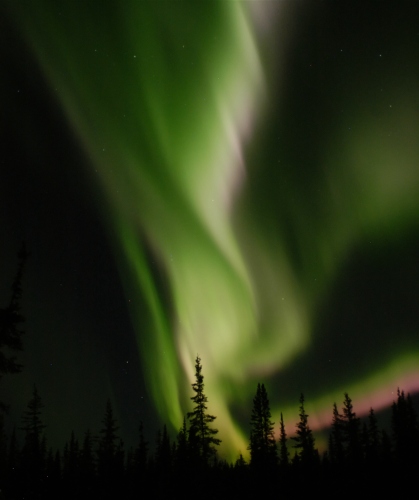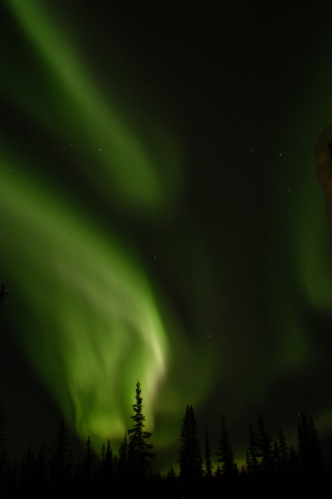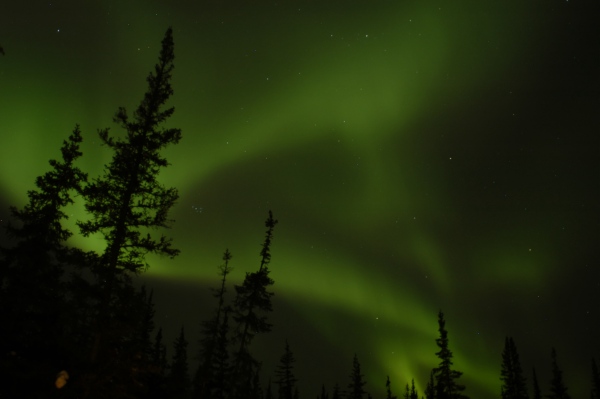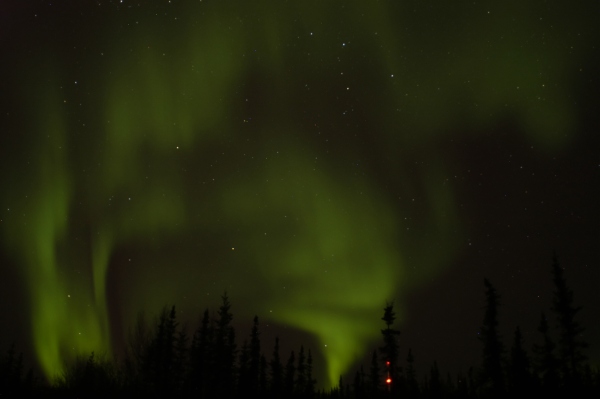Tuesday, March 08, 2005
Aurora action
Well, I didn't see the great auroras that were happening over the weekend, Friday the battery in my digital camera died and Saturday it just wasn't going good when I was outside but tonight... a great night for being outside. Check out how dynamic it was:




Yeah, spoiled rotten by a special evening.. I'm dying to see what's on my film camera, too. That will have to wait until I get that roll developed though.
I can't remember if I've shown you the secret to good pictures but basically, I check this site (when I remember) for the forecast:
GI Aurora Forecast
And this site for the current conditions:
POES Auroral Activity
Basically, if the activity level on the second link is 7 or higher it's worth heading outside every now and then to see how things are going. Also, like weather forecasting the GI forecast isn't always dead on so, if you want to see aurora defintely poke your head out every now and then. Another place I haven't looked at to much but seems like it should hold promise is this one:
SALMON Project
But... at the moment it doesn't seem to be working.
As far as time goes, it's subjective and the learning curve is much reduced by using a digital SLR camera but (immediate feedback so you get a quick handle on how much light is needed to get a good picture), not many have access to that so you basically want to be at the widest aperture (the smaller numbers like F2, F2.8, or F3.5 that you select from the twisting dial on the lens) and vary the time from 5 to 40 seconds. If you want to get better, write your exposure times down as well as the frame # and try to remain aware of the light conditions later after the film is developed. Also in the beginning I found it helpful to be all over the map with exposure so that I could see how thing varied in the film. You may find something that works better though. I guess also you'll need a tripod although as you've probably seen a mitten or backpack can double as a tripod should the circumstances demand it.




Yeah, spoiled rotten by a special evening.. I'm dying to see what's on my film camera, too. That will have to wait until I get that roll developed though.
I can't remember if I've shown you the secret to good pictures but basically, I check this site (when I remember) for the forecast:
GI Aurora Forecast
And this site for the current conditions:
POES Auroral Activity
Basically, if the activity level on the second link is 7 or higher it's worth heading outside every now and then to see how things are going. Also, like weather forecasting the GI forecast isn't always dead on so, if you want to see aurora defintely poke your head out every now and then. Another place I haven't looked at to much but seems like it should hold promise is this one:
SALMON Project
But... at the moment it doesn't seem to be working.
As far as time goes, it's subjective and the learning curve is much reduced by using a digital SLR camera but (immediate feedback so you get a quick handle on how much light is needed to get a good picture), not many have access to that so you basically want to be at the widest aperture (the smaller numbers like F2, F2.8, or F3.5 that you select from the twisting dial on the lens) and vary the time from 5 to 40 seconds. If you want to get better, write your exposure times down as well as the frame # and try to remain aware of the light conditions later after the film is developed. Also in the beginning I found it helpful to be all over the map with exposure so that I could see how thing varied in the film. You may find something that works better though. I guess also you'll need a tripod although as you've probably seen a mitten or backpack can double as a tripod should the circumstances demand it.
